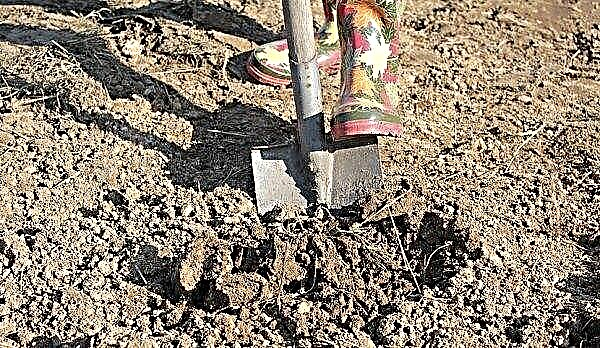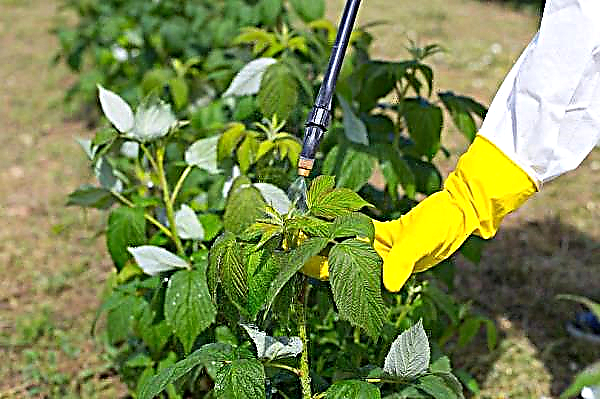Amphora is one of the most popular decorative elements that was used to decorate the landscape back in ancient Greece, while continuing to be actively used in modern design. To successfully enter it on the site, you can use the ready-made ideas of designers or realize your own fantasies.
How to choose an amphora for landscape design
With the help of decorative compositions for decorating houses, summer cottages, garden plots, you can create a unique natural space and a cozy place to relax. Elements of landscape design are created not only from various plants, but also with the inclusion of small architectural forms (MAF), artificial reservoirs, lighting.

One of the varieties of MAFs is amphora.: a clay vessel of various sizes and shapes with an oval or sharp lower part and handles in the upper half. Most often, such a MAF is used to create a natural corner in the Mediterranean style, which can combine ancient Greek, Roman motifs, as well as elements of modern art, considered one of the most elegant and picturesque. It can use a wide variety of plants and decorative elements.
Amphoras are placed vertically or laid horizontally on the site, planting flowers in them. Often they are dug up, hiding certain areas with earth. If the idea is to give the touches of antiquity, then cracked, broken vessels are selected for the site. Usually they are decorated with ampelous or decorative foliage cultures.
Did you know? The Roman emperor Claudius Caesar loved to spend his free time in the garden, personally creating decorative compositions from plants. He had a special love for roses, growing them in large quantities.
One of the best are vessels made of fireclay clay. They are durable, do not deteriorate as a result of exposure to low temperatures and sunlight. Fireclay vessels in bright colors look good in almost any garden design.
When choosing ceramic amphoras, you should know that they must meet the following characteristics:
- in size to be proportionate to the area of the site and other decorative elements;
- to have drainage holes that will not allow moisture to stagnate.
 When choosing the size of the vessel, it is worthwhile to understand that the soil in large jugs will need to be watered much less often than in small
When choosing the size of the vessel, it is worthwhile to understand that the soil in large jugs will need to be watered much less often than in small
How to choose the right plants for design
In order for the site to be decorated in a single style, it is necessary to correctly select decorative cultures that would be in harmony with architectural elements.
If we are talking about creating a corner in a Mediterranean design, then such plants are suitable for it:
- boxwood;
- magnolia;
- viburnum;
- silver goof (olive);
- periwinkle;
- mahonia;
- cotoneaster;
- juniper;
- thuja columnar;
- honeysuckle;
- clematis;
- girl's grapes;
- spirea;
- barberry;
- privet.
Did you know? In ancient Greece, the art of creating parks and gardens originated in the X – VIII centuries. BC e. The distinctive features of the ancient Greek style were utilitarianism, straight paths decorated with columns, vases and sculptures.
When using amphoras, it is important to correctly consider the combination of this element with plants. For planting, it is worth picking up those cultures that have a small root system.
For example, well suited for this purpose:
- young;
- ageratum;
- pansies;
- Iberis
- nemophile;
- lobelia.
A good option is to plant odorous herbs:
- peppermint;
- lavender;
- thyme.

How to make a brook of flowers
An interesting solution in the landscape composition is to create a dry stream flowing from amphora. Imitation of the water flow is done by planting flowers or laying decorative pebbles.
Ceramic vessel can be placed in any position:
- Upright - with the help of falling plants imitate the flowing water stream.
- Horizontal - a flower stream in this case is planted from stunted and creeping crops.

A stream that has a curved irregular shape looks more natural. A two-level flowerbed-stream is planted from ampelous and groundcover flowers.
Plants having the following characteristics are suitable for creating such a composition:
- stamina;
- unpretentiousness;
- plentiful and long flowering;
- blue, blue or white inflorescences.
A beautiful brook emerges from lobelia, ageratum, marigold, petunia, coleus, silver cineraria, stonecrop. For a two- or three-level flowerbed, silver dichondra, lobelia, surfinia, ampelous pelargonium, nasturtium are suitable. Perennial crops are selected for a long-lasting flower garden: armerias, awl-shaped phloxes, stonecrops, stumps. The originality of the composition gives a cracked or broken jug.
Important! The amphora on the site should be positioned at such an angle that rain water does not accumulate in it, since stagnation of moisture can lead to decay of the plant roots.
When creating a decorative element "dry stream", you must first mark its location with the help of pegs and evaluate how the composition will look from different angles. Only after this can you start planting plants.
When planting a “stream”, you need to worry in advance about the spare flowers growing elsewhere or in containers. Since plants growing in amphora often wilt and develop much worse than those that are located on free sites, they can be replaced at any time with new flower bushes. So the composition will not lose its decorative effect.

How to design a patio as a design element
The patio is a common element of landscape design, which is a decorated courtyard, fenced by walls, gratings or green spaces. This is a frequent component of Mediterranean style sites. It was used back in the days of the Roman Empire. The main goal of the patio is to create a feeling of security, comfort, coziness, privacy from prying eyes. Today, this element is also used to create rural, Japanese, Moorish styles.
The design of the patio requires the following components:
- a platform intended for rest, cooking and eating;
- fountain, pool or artificial pond, waterfall;
- vessels in which rainwater collects;
- lawns and flower beds;
- group plantings of trees, shrubs;
- decorative elements (flowerpots, statues, pillows);
- furniture (wooden, forged, rattan);
- cooking appliances (barbecue, barbecue, brick oven).
Important! When equipping a patio, you should definitely consider a drainage system so that rainwater does not stagnate on the site. Alternatively, it is placed on a hill.
To equip the patio, it is advised to choose the southern shaded side on a gentle area, located near the house. It must be equipped with a flat area, paved with natural stone, tiles, wooden flooring. Its minimum area is 5 m². In shape, it can be rectangular, oval or round. On the site should be a place for rest, eating. A mandatory attribute of a patio is access to the garden. Effectively give decoratively aged attributes: flowerpots, amphorae, fragments of tiles. Fits well into the overall design of the fireplace.
From flower compositions when creating the described element of landscape design use rock gardens, tall flower beds. Deciduous trees, conifers, evergreen shrubs are used for landscaping the site. Climbing crops are used for vertical gardening.: clematis, ivy, girl's grapes, lemongrass, hops, sweet peas, decorative beans. Hedges create from jasmine, lilac, boxwood, magnolia. Oleanders, lemons, oranges are planted in amphoras and other containers. Lavender, thyme, mint are placed in small vessels.
 The patio can be equipped under the open sky or under a canopy. An important element of the arrangement is lighting. It is usually made muffled, using garlands, LED strips, lamps of various shapes
The patio can be equipped under the open sky or under a canopy. An important element of the arrangement is lighting. It is usually made muffled, using garlands, LED strips, lamps of various shapes
There are a lot of ideas for using amphora in landscape design. This element should be harmoniously combined with plants and other MAFs. With it, you can create unusual flower beds, complex compositions, interesting landscape corners. Properly selected and arranged in the garden and on the adjacent territory ceramic vessels are a sign of good taste.












